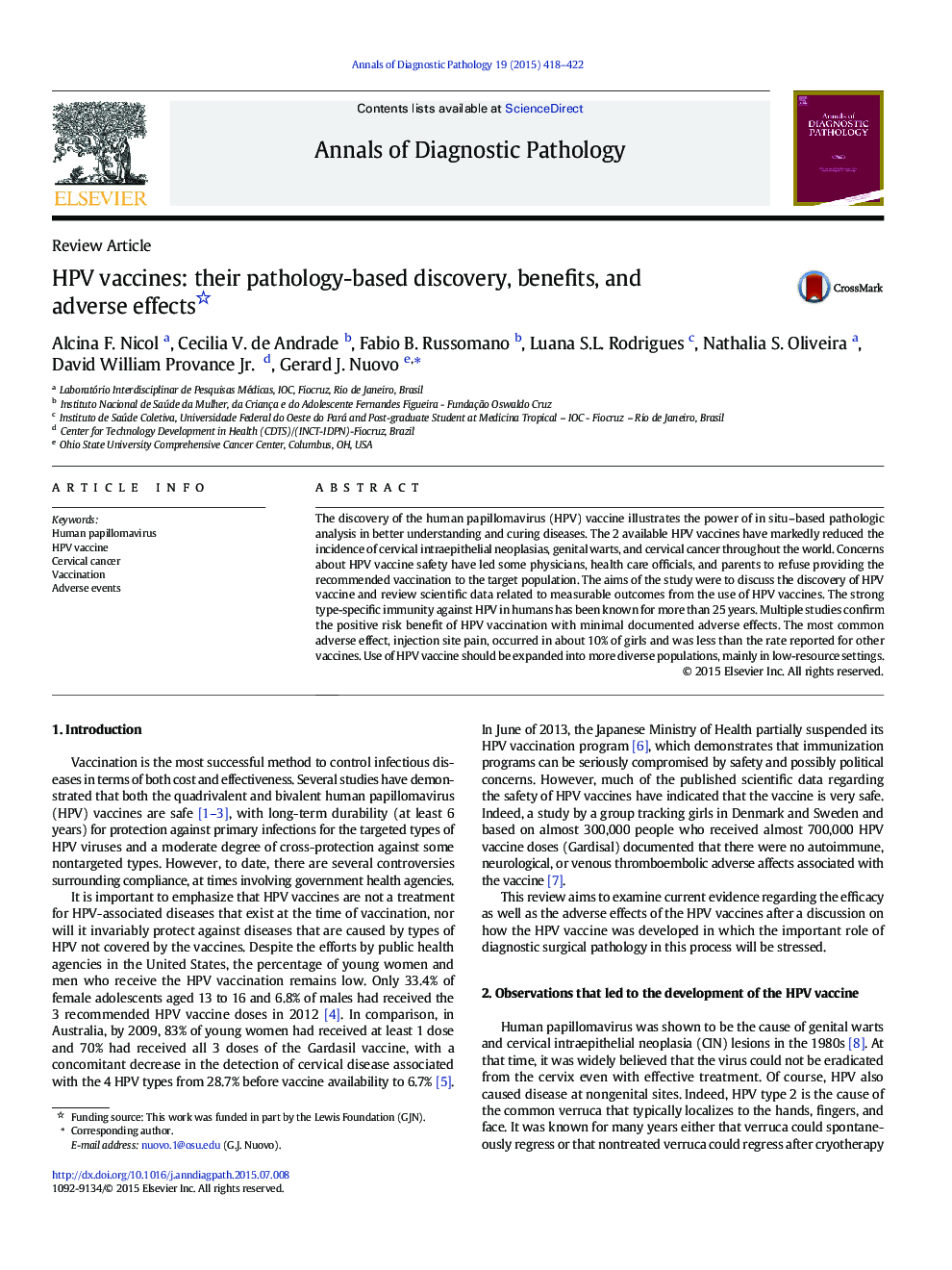| Article ID | Journal | Published Year | Pages | File Type |
|---|---|---|---|---|
| 4129759 | Annals of Diagnostic Pathology | 2015 | 5 Pages |
The discovery of the human papillomavirus (HPV) vaccine illustrates the power of in situ–based pathologic analysis in better understanding and curing diseases. The 2 available HPV vaccines have markedly reduced the incidence of cervical intraepithelial neoplasias, genital warts, and cervical cancer throughout the world. Concerns about HPV vaccine safety have led some physicians, health care officials, and parents to refuse providing the recommended vaccination to the target population. The aims of the study were to discuss the discovery of HPV vaccine and review scientific data related to measurable outcomes from the use of HPV vaccines. The strong type-specific immunity against HPV in humans has been known for more than 25 years. Multiple studies confirm the positive risk benefit of HPV vaccination with minimal documented adverse effects. The most common adverse effect, injection site pain, occurred in about 10% of girls and was less than the rate reported for other vaccines. Use of HPV vaccine should be expanded into more diverse populations, mainly in low-resource settings.
